| January 10, 2023 | Volume 19 Issue 01 |
|
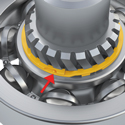 | Do Not Let High-Speeds Hold You Back
Smalley's Revolox™ Self-Locking Ring enables you to design for high RPM requirements. The "dimple & slot" design enables engineers to design around high RPM requirements safely and with ease of assembly for high production volumes. From electric motors to transmissions, upgrade to the Revolox today and enjoy the peace of mind that comes with a strong and reliable retaining ring.
Learn more. |
| | Feature articles |
 | Two new rifles coming to Army close-combat soldiers
The U.S. Army recently awarded a contract to manufacturer SIG SAUER for two new weapons for soldiers involved in close-quarters combat. The XM5 will replace the M4/M4A1 carbine rifle, while the XM250 will replace the M249 Squad Automatic Weapon. In addition to improved accuracy, the new firing systems provide greater energy on the target.
Read the full article. |
|
 | Speedy delivery: 2,000-hp Ford SuperVan does 0 to 60 in under 2 sec
In a bid to show off the over-the-top capabilities of all-electric truck power, Ford has created a 2,000-hp one-of-a-kind SuperVan that is sure to be the envy of many delivery drivers worldwide. The new vehicle is the fourth of Ford's bulked-up SuperVan demonstrators that stretch back to 1971, but this is the first all-electric one and certainly the first to feature a dedicated burnout mode.
Read the full article. |
 | 1945 XF-82 Twin Mustang returns to flight
On Dec. 14, 1949, an XF-82 Twin Mustang aircraft (developed as a WWII bomber escort) skidded off the runway after completing a research flight for the National Advisory Committee for Aeronautics Flight Propulsion Lab (today, NASA Glenn) in Cleveland, OH. The aircraft was scrapped. Learn about the XF-82's unique design and its eventual return to flight 70 years later.
Read the full article. |
 | Porsche 911 Sport Classic 2023: The ducktail is back
Fans of iconic Porsche design have something new to celebrate: The 911 ducktail is back. This time around it takes the form of the limited-edition 911 Sport Classic, which pays tribute to the 911 Carrera RS 2.7 of the early 1970s. Production of this 543-hp collector's car is limited to 1,250 examples worldwide.
Read the full article. |
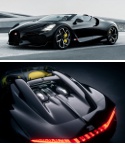 | Bugatti Mistral: Last to run on the W16 combustion engine
The 8.0-liter W16 engine has been propelling Bugatti's hyper sports cars for almost 20 years. It's the only 16-cylinder engine in the world to be used in a car, and now its days are officially numbered with the release of the Bugatti Mistral roadster, a 1,578-hp, 99-unit open-top that will be the last of its kind to feature the W16.
Read the full article. |
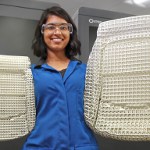 | Top Product: New 3D-printable foam expands to full size after heating
When we first heard about the new FreeFoam material invented by Adaptive3D that can be 3D printed and later heated to expand to its final, intended full size, we thought, "Hmmm ... that's weird," but later it dawned on us that this is incredibly useful. FreeFoam is part of the recently launched DuraChain category of one-part, one-pot photopolymers from Desktop Metal.
Read the full article. |
 | Top Product: Machine build frames feature internal cable guide
When machine frames are designed, cabling is often an afterthought. Not anymore. Bosch Rexroth's new function-integrated profiles (FIPs) feature a fully internal cable guide that can run through and out of profile junctions. The FIP range comprises four profile cross-sections, with a catalog of accessories that also complements the modular system.
Read the full article. |
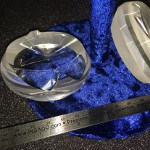 | Top Application: What's a sapphire piston used for -- and who can make one?
If you want a prototype piston made of metal for research purposes, you have a lot of options -- you can even 3D print your own. But what if you need something much more exotic, like the second-hardest natural material? When Mid Michigan Research had just such a need, it turned to Insaco for the company's long history of custom fabrication of sapphire precision parts, often in unusual forms.
Read the full article. |
| | Most popular last issue |
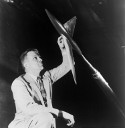 | How a NASA engineer created the modern airplane wing
Once dubbed "the man who could see air," NASA engineer Richard T. Whitcomb used a combination of visualization and intuition to revolutionize modern aviation -- by turning the shape of the airplane wing on its head. Today, nearly every commercial airplane bears the marks of Whitcomb's several innovations, which include the development of winglets on wing tips.
Read the full article. |
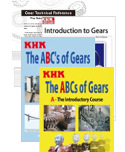 | Great Resources: ABCs of gears and more
KHK USA takes you on a journey through the history and applications of gears in two information-packed, no-cost volumes called "The ABCs of Gears." Part A is aimed at beginners, while part B moves on to intermediate fare, such as types of gears and tooth forms, heat treatment, surface treatment, production methods, etc. Mid-level "Introduction to Gears" and an in-depth "Gear Technical Reference" are also available.
Learn more. |
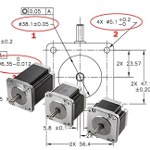 | Three steps to mount a step motor
Jeff Kordik, chief technical officer, Applied Motion Products, runs through the basic steps to mount a step motor and also covers key mounting dimensions. He provides his pro tips along the way and also gives tips for determining proper step motor torque as a sidebar. Lots of good info here.
Read the full article. |
|
| | Videos+: Technologies and inspiration in action | Artemis 1 moon rocket blew launch pad elevator doors off
Space dot com has posted an interesting video that details the damage the Artemis 1 moon mission's Space Launch System (SLS) rocket and its almost 9 million pounds of thrust caused to the NASA launch pad and surrounding facilities at the Kennedy Space Center in Florida when it launched Nov. 16. Watch NASA's Mike Sarafin, Artemis mission manager, detail what happened when the most powerful rocket in the world took off.
View the video. |
 |
Was America wrong about ethanol?
Spurred by new research from the University of Wisconsin - Madison, Engineering Explained's Jason Fenske gets in front of his favorite whiteboard to address a long-standing debate about using corn-based ethanol additives in gasoline. Does octane-boosting ethanol really help reduce fuel emissions in the long run? Is it our best choice for the environment? Whether you agree with him and the research or not, you can always learn something from a Fenske video.
View the video. |
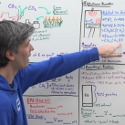 |
|
|